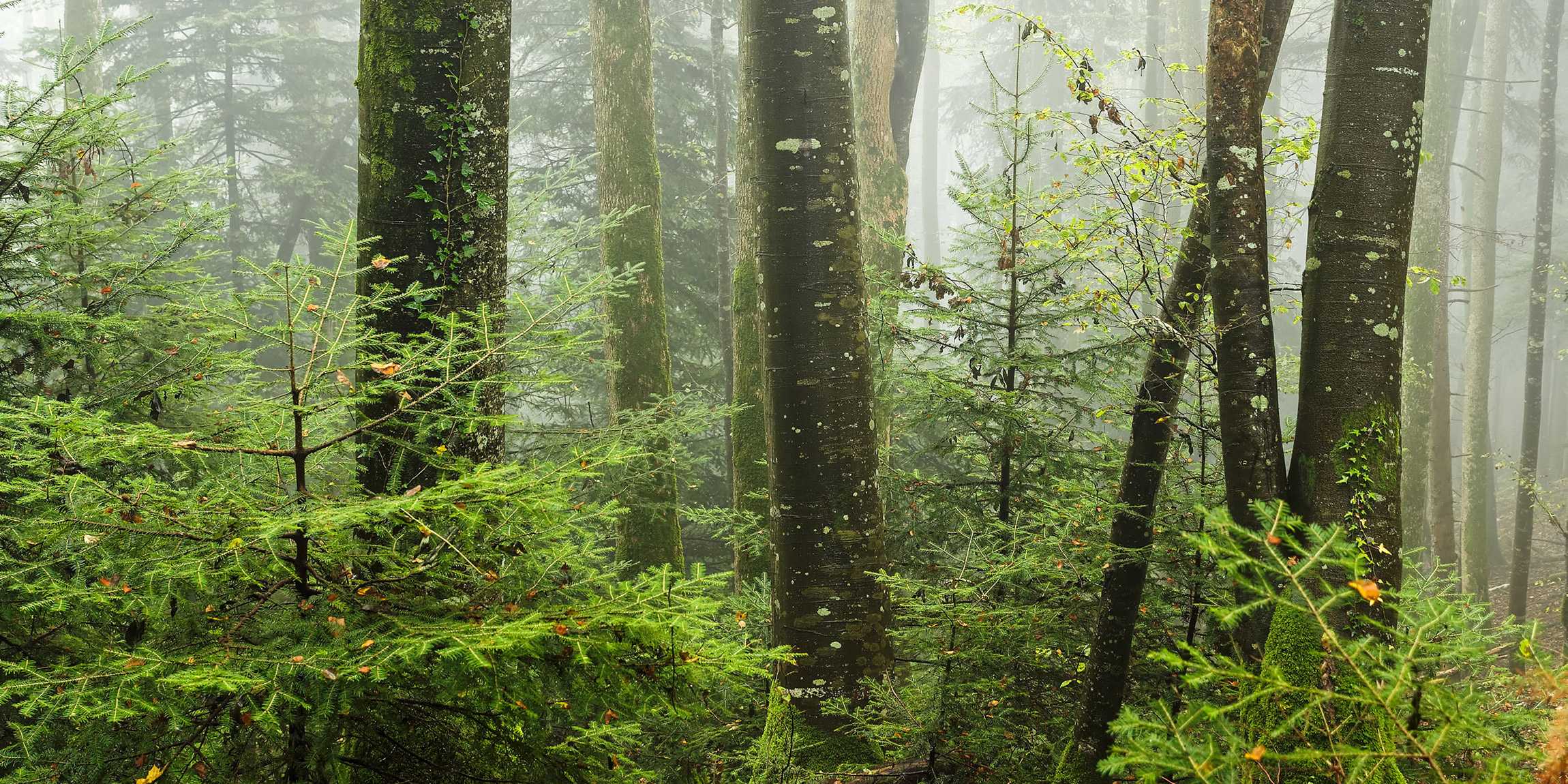
How Europe’s forests regenerate – without any human interference
Forests renew themselves naturally. There has been very little research into how exactly this happens – until now. Researchers at ETH Zurich and WSL have set themselves the task of solving this puzzle.
In brief
- Competition between trees is one of the driving forces in the natural regeneration of forests.
- Water scarcity greatly intensifies competition; small trees are suppressed.
- In mixed forests, there is interaction between the different regeneration strategies employed by the tree species involved.
Yannek Käber, a doctoral student in the Professorship of Forest Ecology at ETH Zurich, and his colleagues from ETH and WSL together with the European Forest Research Initiative (EuFoRIa, www.euforia-project.org), have taken a look at regeneration in protected European forests for the first time.
In a new study recently published in Journal of Ecology, the researchers show how natural regeneration develops without human influence. To this end, they investigated the emergence of young trees in just under 300 natural forest reserves all across Europe. They analysed how regeneration of the forest works under a wide range of environmental conditions. This involved examining the complex interplay between the different features of the tree species, forest density, disturbances and climate.
Water scarcity leads to fierce competition
One of the most important processes for forest regeneration is competition. What strategies trees use depends on their species. This study shows that positive interactions between trees only occur in a few species, and are therefore rarer than previously assumed. The features of the species concerned and the varying stress factors determine whether trees protect each other from cold or dry conditions during regeneration or whether they compete with each other instead.
Cold stress tends to lead to more protective interactions from other trees than drought stress does. The researchers explain this result by pointing out that low temperatures do not trigger competition for limited resources. Scarcity of water, on the other hand, leads to fierce competition. This can lead to smaller trees being suppressed.
Waiting for gaps
The study also shows what strategies the various tree species use to regenerate. Some are particularly successful in dense forests. Others wait for disturbances such as fire or storms that create gaps in the canopy. As soon as enough light becomes available, these species grow quickly.
In mixed forests, the varying strategies of the different species interact. This means these forests are better placed to react to climatic stress, in that more species emerge that can cope with drought and heat, for example. This changes not only the composition of the forest, but also its structure – in other words, the mix of trees of different sizes and ages. And forest structures form that can only arise in undisturbed and protected forests.
European Forest Reserves Initiative (EuFoRIa)
The external page EuFoRIa network was founded in 2019 to promote collaborative research into European primeval forests and forest reserves. It comprises hundreds of survey plots that have been under observation for several decades with the help of forest inventories. The network is sustained by researchers from 26 institutions in 19 countries. An important focus of the research is on understanding the processes involved in natural forest development, because this understanding forms the basis of the development of adaptive strategies for forests in the future, against the background of climate change.
Reference
Kaeber Y, Bigler C, Hillerislambers J, et al.: Sheltered or suppressed? Tree regeneration in unmanaged European forests. Journal of Ecology, 10 September 2023; doi: external page 10.1111/1365-2745.14181
Comments
No comments yet